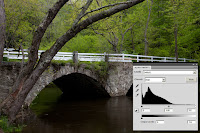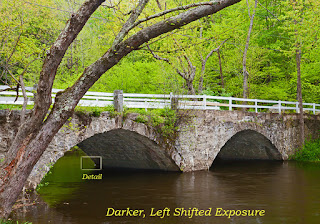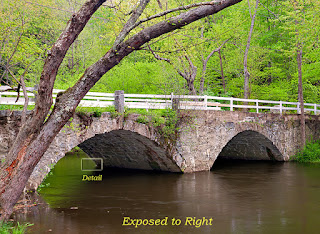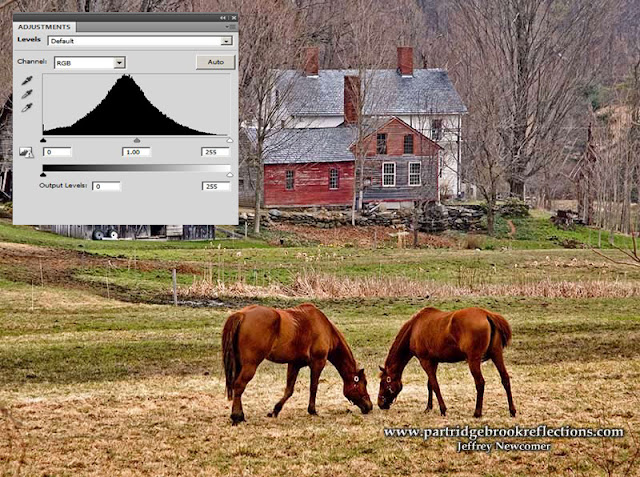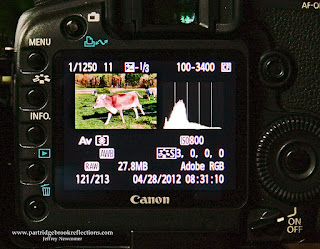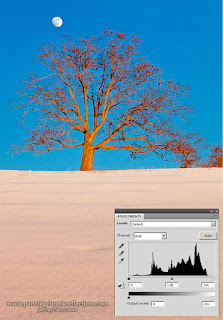 |
| Breaking Away 201 |
If you photograph in New England it means that you shoot cows. Although it is no longer true that there are more cows than people in Vermont, they remain an unavoidable part of rural New England life. You might as well photograph them intentionally since regardless of intention they are bound to wander into even your most carefully planned landscape. Personally, I love these placid, four-legged milk factories. They provide a sense of balance and peace to many compositions, but photographing cows is always a
 |
| Head Above, NE Kingdom, Vermont |
Dancing of the Ladies
 |
| Twist and Shout |
Every spring Stonewall Farm, in Keene New Hampshire, offers a
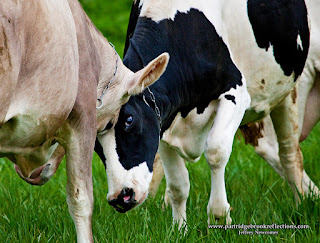 |
| Head But |
 |
| Connection |
 early in the morning to see a spectacle that lasts only a few minutes. Before one can say “chewing their cud” the cows are back to their usual semi-comatose grass munching status. Brief as the excitement is, I confess I am attracted every year. My best image of the dance came the first year I attended. I was told at the time that no one before had ever captured a cow in full kick and I have to admit that I haven’t yet been able to get a similar shot. What I find most fascinating about the shot is that the cow's face seems to betray no awareness off what her legs are doing.
early in the morning to see a spectacle that lasts only a few minutes. Before one can say “chewing their cud” the cows are back to their usual semi-comatose grass munching status. Brief as the excitement is, I confess I am attracted every year. My best image of the dance came the first year I attended. I was told at the time that no one before had ever captured a cow in full kick and I have to admit that I haven’t yet been able to get a similar shot. What I find most fascinating about the shot is that the cow's face seems to betray no awareness off what her legs are doing. |
| Cow Kick |
Strolling of the Heifers

Another good chance to catch cows in a more controlled
 environment is the annual Strolling of the Heifers Weekend held in Brattleboro Vermont every spring. The festival includes many family friendly bovine events, all built around the Strolling of the Heifers Parade. The parade features cute heifer calves marching down Main Street, accompanied by tractors, bands, clowns and more. It is a classic celebration of rural New England life and tradition. The parade this year is at 10a.m., Saturday , June 2nd.
environment is the annual Strolling of the Heifers Weekend held in Brattleboro Vermont every spring. The festival includes many family friendly bovine events, all built around the Strolling of the Heifers Parade. The parade features cute heifer calves marching down Main Street, accompanied by tractors, bands, clowns and more. It is a classic celebration of rural New England life and tradition. The parade this year is at 10a.m., Saturday , June 2nd. Cowscapes
This year the Vermont Center for Photography, in Brattleboro, is complimenting the stroll with a juried photography exhibition celebrating cows in New England. "Cowscapes" includes 38 images contributed by photographers from throughout New England. The opening is June 1st from 5:30 to 8:30 p.m.. Check it out if you are in the area. You will even get a chance to see my "famous" jumping cow photograph. VCP Gallery is tucked away in a back alley in Brattleboro. Check out our web site for directions.
Dancing, parading and a show. If all of this is not enough cow for you, I suggest you follow another New England tradition of spring. Fire up your barbecue and have a burger.
 |
| Thinking of Home |
For more dancing check out my blog about last year's event:
http://jeffnewcomerphotography.blogspot.com/2011/05/dancing-of-ladies.html
Links:
Stonewall Farm :
http://www.stonewallfarm.org/
Strolling of the Heifers:
http://www.strollingoftheheifers.com
Vermont Center for Photography
http://www.vcphoto.org/



















